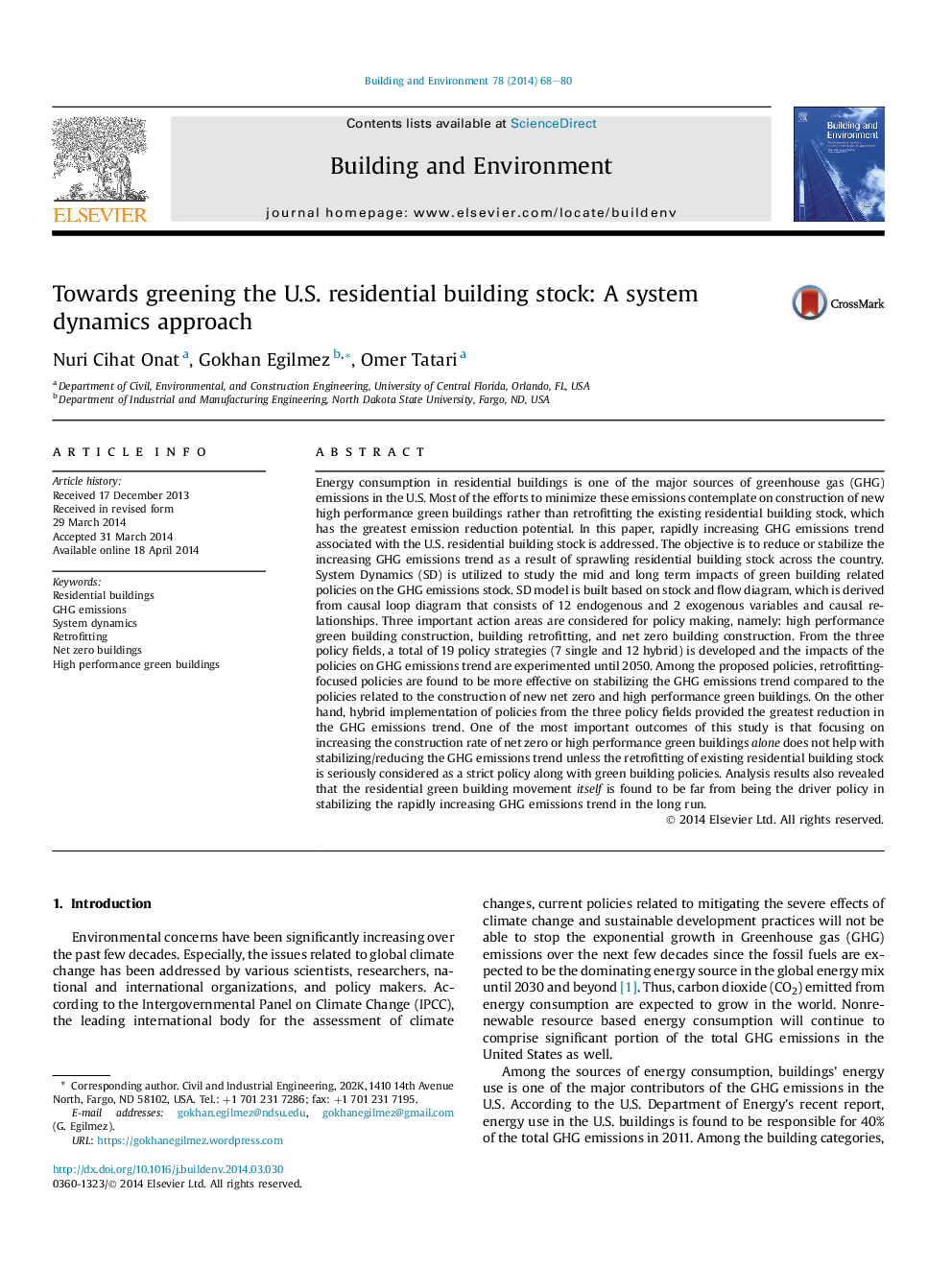| کد مقاله | کد نشریه | سال انتشار | مقاله انگلیسی | نسخه تمام متن |
|---|---|---|---|---|
| 248119 | 502547 | 2014 | 13 صفحه PDF | دانلود رایگان |
• Rising GHG emissions stock of the U.S. residential buildings is addressed.
• A System Dynamics model is built to model the GHG emissions trend holistically.
• High Performance and Net Zero buildings, and retrofitting were the policy areas.
• Retrofitting was found to be the most effective policy strategy.
• Hybrid policies found to be the only way to stabilize the rising GHG stock.
Energy consumption in residential buildings is one of the major sources of greenhouse gas (GHG) emissions in the U.S. Most of the efforts to minimize these emissions contemplate on construction of new high performance green buildings rather than retrofitting the existing residential building stock, which has the greatest emission reduction potential. In this paper, rapidly increasing GHG emissions trend associated with the U.S. residential building stock is addressed. The objective is to reduce or stabilize the increasing GHG emissions trend as a result of sprawling residential building stock across the country. System Dynamics (SD) is utilized to study the mid and long term impacts of green building related policies on the GHG emissions stock. SD model is built based on stock and flow diagram, which is derived from causal loop diagram that consists of 12 endogenous and 2 exogenous variables and causal relationships. Three important action areas are considered for policy making, namely: high performance green building construction, building retrofitting, and net zero building construction. From the three policy fields, a total of 19 policy strategies (7 single and 12 hybrid) is developed and the impacts of the policies on GHG emissions trend are experimented until 2050. Among the proposed policies, retrofitting-focused policies are found to be more effective on stabilizing the GHG emissions trend compared to the policies related to the construction of new net zero and high performance green buildings. On the other hand, hybrid implementation of policies from the three policy fields provided the greatest reduction in the GHG emissions trend. One of the most important outcomes of this study is that focusing on increasing the construction rate of net zero or high performance green buildings alone does not help with stabilizing/reducing the GHG emissions trend unless the retrofitting of existing residential building stock is seriously considered as a strict policy along with green building policies. Analysis results also revealed that the residential green building movement itself is found to be far from being the driver policy in stabilizing the rapidly increasing GHG emissions trend in the long run.
Journal: Building and Environment - Volume 78, August 2014, Pages 68–80
